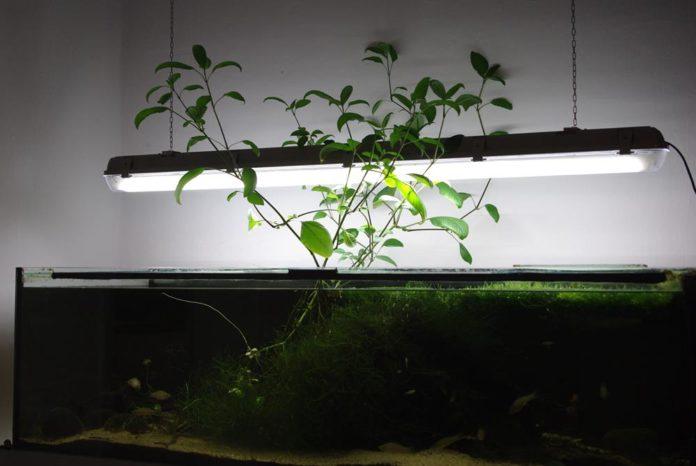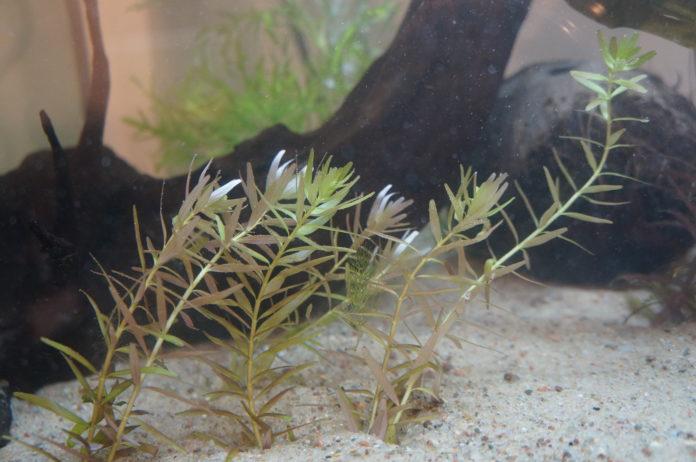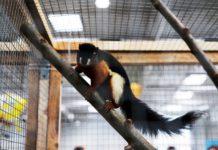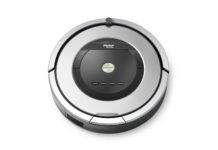Stem plants grow primarily in height, so they need to be pruned. Thanks to this treatment, they will spread and create a beautiful, compact clump. To make it even more dense, we can plant it next to the cuttings that were obtained as a result of cutting.
They are perfect for the rear glass of the aquarium, creating a background for other plants and decorations. They „extract” nitrogen compounds from the water very well, which is recommended for a large number of fish, especially viviparous fish.

Hygrophila plants
Stem plants of this genus are characterized by rapid growth (some species even up to 10 cm per week) and low requirements. They can grow above the surface of the water, releasing leaves that are adapted to air, not water. However, this is undesirable as it loses underwater leaves and loses its attractive appearance when it rises out of the water.
They need a lot of light for about 12 hours a day. The stronger the lighting, the more beautiful and interesting the plant looks. The optimal temperature for them is 23-28 ° C. They like fertile and rich soil, preferably with the addition of clay. They require a weekly water change in the amount of approx. 25 – 30%. They grow well in tap water (hard, with a neutral or slightly alkaline pH).
In nature, they are found on the Indochina Peninsula.
| height, place in the aquarium | up to 1.5 m; 3rd plan |
| temperature | 23 – 28 °C |
| water pH level | 7,0 – 8,0 |
| total water hardness | medium-hard to hard |
| lighting conditions | intensive, 12 hours a day |
| soil | fertile, abundant, with the addition of clay |
Species recommended for beginners:
-
Hygrophila difformis

Its leaves are light green, pinnate, slightly reminiscent of fern leaves, although in the case of recently planted plants, the first leaves may be oval and poorly serrated. At lower temperatures the leaves are thicker and less clipped, at higher temperatures the leaves are larger and more separated. The shoots can be up to 1.5 m long, but the stems are quite easy to break. It is not particularly sensitive to the chemical composition of water, although it likes the addition of iron. At night, it raises the leaves up and folds.
-
Hygrophila carymbosa

It has a stiff stem, which allows it to grow up to 1 m in height. The leaves can be reddish or bluish. Many varieties of this species have been bred.
-
Hygrophila polysperma

It has light green leaves that acquire a brownish tinge under intense lighting. You can also find the form of this plant with clearly bright veins of the leaf blade (Rosanervig).
Red leaf Ludwigia
Native to Central America and southern North America.
There are many species and even more hybrids and varieties. The leaves show a wide variety of colors (dark red, green, green with red undersides, pinkish) and shapes (round, oval, lanceolate and even twisted).
The hardness of the water is not important, it can be acidic and slightly alkaline with a temperature between 18-30 ° C. It can grow in low light, however intense lighting and the addition of iron intensify the red color. It branches little by itself, so it should be trimmed quite often.
| height, place in the aquarium | II and III plan |
| temperature | 23 – 28 °C |
| water pH level | 6,5 – 7,8 |
| total water hardness | soft to hard |
| lighting conditions | the stronger, the easier it turns red |
| soil | fertile, abundant, with the addition of clay and iron |

Limnophila sessiliflora
It grows wild in India, Japan, Indonesia and Sri Lanka.
It creates attractive light green plumes, and looks most beautiful when planted in groups. Reaches up to 30 cm in height. At a temperature of 25-30 ° C it grows very quickly. It grows well in soft to hard water with a pH of 5.5 – 7.5. Intensive lighting is necessary. Under favorable conditions (a lot of light, a lot of iron in the water), the tops of the shoots acquire a reddish tinge.
The plant is ideal for water treatment and stabilizes the biological balance in the aquarium, actively oxygenates and purifies the water. It is an ideal shelter for fry.
| height, place in the aquarium | up to 30 cm; 3rd plan |
| temperature | 25 – 30 °C |
| water pH level | 7,0 – 8,0 |
| total water hardness | soft to hard |
| lighting conditions | intense |
| soil | fertile, abundant, with the addition of clay |
Rotala rotundifolia
Often found in the waters of India, China, Laos, Vietnam, and even in the southwestern Himalayas, in Nepal. In nature, it is a mud plant that grows on the banks of water. It resembles a fir twig, because its underwater leaves are small, narrow, and oblong. The waterside are round. The upper side is green or reddish, and the lower side is pink-red to purple in color.
The optimal temperature is 24-28 ° C, the water can be soft to hard with a pH of even about 8. Strong lighting with a wide spectrum is needed, preferably with the participation of fluorescent lamps with a large share of red light (plant fluorescent lamps). It likes fertile soil, clay and peat balls or fertilizer sticks.
During the night, it lifts the leaves up, „folds”.
| height, place in the aquarium | up to 1.5 m; 3rd plan |
| temperature | 24 – 28 °C |
| water pH level | 7,0 – 8,0 |
| total water hardness | soft to hard |
| lighting conditions | intense, with a wide spectrum |
| soil | fertile, abundant, with the addition of clay or fertilizer sticks |
Bacopa monnieri
It occurs in tropical and subtropical areas of Africa, Asia, Europe and America. It grows in wetlands and marshes, often partially flooded. It blooms pink above the water’s surface.
The optimum temperature for it is 18-25 ° C, so it is suitable for unheated aquariums, but can withstand temperatures of 29 ° C. Adapts to water hardness and acidity. It can even grow in slightly salty water. It grows well in both soft and hard, slightly acidic or alkaline waters, up to a pH of 7.5. Needs periodic partial water changes.
| height, place in the aquarium | up to 1.5 m; 3rd plan |
| temperature | 18 – 25 °C |
| water pH level | 6,5 – 7,5 |
| total water hardness | soft to hard, even brackish |
| lighting conditions | average or good |
| soil | fertile |







